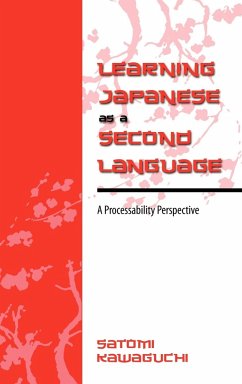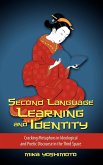Learning Japanese as a Second Language: A Processability Perspective makes a substantial contribution to second language acquisition (SLA) studies, especially for its discussion of speech processing involved in L2 sentence production and because it accounts for learning a language which is typologically distant from the native languages of the learners. The long-range perspective offered by data covering periods of up to three years is very unusual and thus highly valuable in the SLA context, where many studies are only cross-sectional or, at best, only cover a short time span. The longitudinal studies in this book are further buttressed by a cross-sectional study that supports generalizations from the findings. In addition, the author used original and inventive tasks to elicit data on structures such as passive and causative that are notoriously hard to elicit. The author also shows the various developmental stages and how these were used to measure the language development of both second language learners' and bilingual speakers. This book will be an important reference for anyone working in the SLA and JSL fields, postgraduate students of Japanese and second language acquisition, and Japanese language professionals such as teachers of Japanese, JSL textbook writers, or English-Japanese translators.
Hinweis: Dieser Artikel kann nur an eine deutsche Lieferadresse ausgeliefert werden.
Hinweis: Dieser Artikel kann nur an eine deutsche Lieferadresse ausgeliefert werden.








